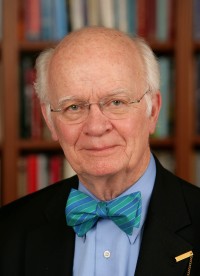Duly noted
Herewith,1 an2 essay3 on4 footnotes.5 Quote6: “Lomborg’s7 book,8 The Skeptical Environmentalist,9 is10 carefully11 researched12 (2,93013 footnotes14!15).” So reads a line in a letter to the editor that criticized author Bill McKibben for basing his environmental concerns on “bad science which results in equally bad theology” (Century, May 1). The “good science,” to this letter-writer, is exhibited in Bjørn Lomborg’s “carefully researched” (2,930 footnotes!) book. The right theology, writes this reader, is “one of abundance, not scarcity.” Nature has a “resilient capacity to replenish itself. We ought not be anxious, but rather consider how nature arrays (and cares for) itself.”16
1 Of course, this essay is “herewith.” Where else would it be?
2 “An” signals something much more generic than does the definite article “the.” Check any book on grammar.
3 Technically, this is not an essay. It is a column with pretensions. It wants to be an essay, or an essay that is shrunk to a column, but in any case, it has kept its footnotes.
4 “On” can represent “in respect to” or it could refer to the footnotes being at the bottom and the essay being “on” them.
5 G. K. Chesterton or C. S. Lewis or Hilaire Belloc or someone else that we haul in when we are not doing careful research has said that footnotes can be interruptive: “like hearing a knock on the door downstairs while you are making love to your spouse.”
6 “Quote” signals that one is going to write something that warrants a footnote, and that one is fearful of charges of plagiarism.
7 Bjørn Lomborg, the Scandinavian scientist, is quoted regularly by the Wall Street Journal or anyone writing a “Me, Worry?” editorial against Al Gore’s An Inconvenient Truth. That gives Lomborg plenty of opportunities to be cited, since so many scientists are alerting us to the reality of global warming. Incidentally, “Lomborg” is not to be confused with “Limbaugh.”
8 It’s a book; try getting 2,930 footnotes into an article.
9 2,930 footnotes comes to 976.666 for each word in the title.
10 “Is” is present tense, which means that the book with its 2,930 footnotes is still in print.
11 One must assume that anyone who is amassing 2,930 footnotes will take care to get all of them right. If one is a miscitation, the whole house of cards would fall.
12 This column is evoked by the columnist’s passion to make a point about footnotes. Whether or not they appear has little to do with scholarship and more with function. For instance, I once wrote a three-volume work, Modern American Religion, in which each of the hundreds of paragraphs is footnoted. One might say that I had nothing to say unless a primary or secondary source had left a trace.
13 This footnote is a continuation of the previous one, which was getting too long. Karl Barth’s book Christ and Adam is a book-length version of one of his longer footnotes—50,000 words, I believe—in his giant Kirchliche Dogmatik. He could do that because he had a score of big fat volumes to work with, and I have part of a page.
14 That reminds me that I am writing a mini-essay in footnotes on footnotes and their relative irrelevance when one wants to assess the scholarship of a book or essay. I once wrote a 500-page book, Pilgrim in Their Own Land, in which the publisher’s format did not allow a single footnote. Yet it took me three summers of writing through eight or nine drafts, based on 900 book sources.
15 This footnote refers to the exclamation point. I had a seminary professor who taught us to use the initials AWYLH at the margins of sermons on occasion; they refer to “Argument Weak: Yell Like Hell!” Exclamation points can serve such a purpose in a book of ideology and polemic.
16 I couldn’t resist one more footnote. May God’s people not buy into a theology in which they enjoy the abundance nature without committing themselves to caring for it—or what’s left of it.






